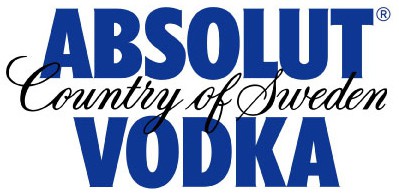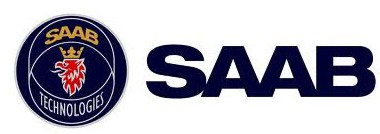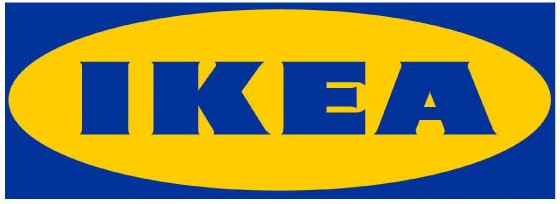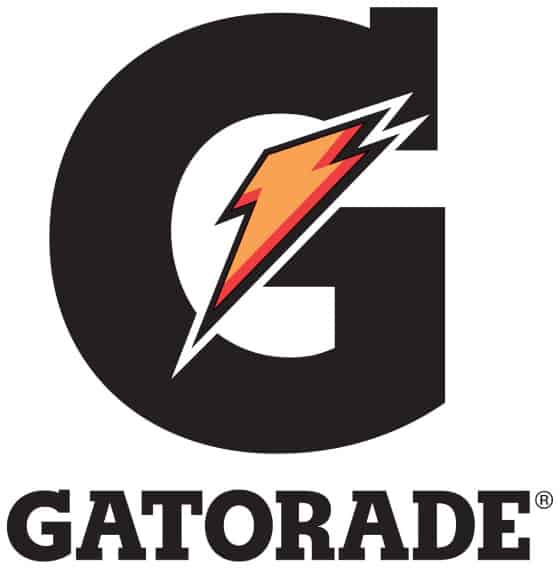Brand Management Services
Effective Brand Management establishes a strong and differentiated Brand Identity, cultivates brand loyalty, and builds trust with customers. It involves strategic planning, monitoring, and adaptation to maintain brand relevance, protect brand reputation, and maximize Brand Equity. By actively managing a brand, businesses can influence customer perceptions, differentiate themselves from competitors, and ultimately drive long-term success in the marketplace.

What is Brand Management?
Brand Management ensures that the three aspects of the brand’s identity (profile, essence, and architecture) are operationalized and optimized to produce the maximum value for the organization. Once the Brand Identity is defined and codified, the organization must implement and operationalize it so that it becomes part of every employee’s decision-making process. This typically involves training employees in Brand Profile, essence, and architecture, and then exploring how they, as individuals, could support the Brand Identity through their day-to-day work. After that, it’s important to develop KPIs that individuals and departments can use to monitor their progress to provide regular feedback on how they are doing and focus their efforts on what could be done to improve.
The objective of this work is to get the Brand Identity (how the organization wants the target to perceive the brand) as close as possible to the Brand Image (how the target actually perceives the brand). They will never line up 100%, but with dedicated management, they can be kept in relative alignment.
Why does Brand Management matter?
Brand Management matters because trust matters. A recent meta-analysis of brand research from the online recruitment company Zippia revealed that:
- A constant brand presentation can increase revenue by as much as 33%
- 82% of consumers say they opt for brands that share their values
- 86% use the brand’s perceived authenticity as a proxy for trustworthiness
- 83% of consumers say they will not buy from brands they do not trust
- 90% of customers are willing to pay more if they’re purchasing from a brand they trust
- Companies with strong Brand Image spend up to 50% less on recruitment and training costs
- Companies with poor Brand Image must pay at least 10% more in salaries to retain talent
Brand Management is, in many respects, the activity of developing a brand bias in the minds of buyers. As noted above, this brand bias has clear economic benefits. Without Brand Management, these monetary rewards remain out of reach.
The Brand Identity document is the blueprint used to create a strong brand defining how the organization wishes its brand to be perceived by buyers. It is carefully crafted to support the Marketing Strategy and provide the brand with a competitive advantage in the market. Of course, there are other elements that contribute to attaining a competitive advantage, but brand perception is among the most influential and most difficult to copy.
It’s important to remember, however, that the Brand Identity is just a statement of intent. It describes how the organization wants the brand to be perceived in order to help build a sustained competitive advantage. Actually creating that perception is another story. That requires proactive implementation and management of the Brand Identity to produce the desired Brand Image.
Does Brand Management just pertain to the brand’s Visual Profile?
1. The Hidden Power of Brand Identity: Moving Beyond Visual Profile
The short answer is no. A comprehensive Brand Identity is a powerful tool that goes beyond just visual aesthetics. It comprises three critical components: the Brand Visual Profile, the Brand Essence, and the Brand Architecture.
However, companies with low market orientation tend to obsess over the visual profile while neglecting the Brand Essence and architecture. This approach can have detrimental effects on a business and is why CEOs should adopt a more holistic view of their Brand Identity.
For an organization to benefit from its brand(s), all three aspects of identity require proactive management. The name and visual profile of a brand is undoubtedly important. It includes elements such as logos, colors, typography, and imagery that contribute to brand recognition and recall. But the profile is just the tip of the iceberg. It’s obvious and easy to see, so it tends to get an inordinate amount of attention. So much so that in many organizations, the Brand Profile is the only aspect of the Brand Identity that is implemented and managed. This leaves most of the brand’s potential value for the organization untapped. While it is important that the logo and Graphic Guidelines be used consistently around the world, it’s equally important that the brand displays the same values and behavior and that the architecture is consistently applied in all markets. Otherwise we just have the facade of Brand Management. While the visual appeal and consistency are crucial, an imbalanced focus on it can undermine the true potential of a Brand Identity. It’s just as important to establish and implement Brand Essence and Architecture.
2. Brand Essence: Unleashing the Emotional Connection and Unique Identity
Brand Essence represents the core values, purpose, and unique attributes of a brand. It encompasses the emotional connection and distinct identity that sets a brand apart from competitors. It’s important to define and codify the Brand Essence as a first step. But if it is not embraced, believed, and practiced by employees, then its beneficial effects on the business will be negligible.
3. Benefits of Embracing Brand Essence
When employees are trained in, understand, and embody the Brand Essence, it offers a number of benefits to the organization.
- Differentiation and Competitive Advantage: Brand Essence serves as the anchor for differentiation. By clearly defining and embodying the brand’s core values, purpose, and personality, businesses can set themselves apart from competitors and establish a unique position in the market.
- Authenticity and Trust: A well-implemented Brand Essence fosters authenticity, which builds trust and loyalty with customers. When a brand consistently delivers on its essence, it creates a sense of reliability, integrity, and transparency that resonates with customers.
- Emotional Connection and Customer Loyalty: Brand Essence taps into the emotional aspects of customer decision-making. By aligning with customers’ values and aspirations, businesses can forge deep emotional connections and cultivate long-term customer loyalty.
4. Brand Architecture: Establishing a Clear and Cohesive Brand Portfolio
A well-defined Brand Architecture provides a clear and structured framework for managing a Brand Portfolio. It ensures that sub-brands and product lines have consistent relationships and identities, resulting in a unified Brand Portfolio. It paves the way for growth by establishing the framework and policies for new market entries, new product introductions, line extensions, and modifications, as well as assimilating product lines acquired through mergers and acquisitions. Without a well-crafted Brand Architecture, these activities are more expensive and time-consuming to execute. They are also much more disruptive to the organization and to buyers.
5. Benefits of Focused Brand Architecture
- Clarity and Cohesion: A strategic Brand Architecture provides clarity to customers, partners, and employees by clearly defining the relationships and hierarchies within the Brand Portfolio. It fosters a cohesive Brand Identity and reinforces brand recognition and recall.
- Efficient Portfolio Management: By understanding the relationships among various brands, businesses can make informed decisions about brand extension, diversification, or consolidation. This enables efficient portfolio management and resource allocation.
- Amplifying Brand Equity: A well-designed Brand Architecture enhances the overall Brand Equity. It allows for effective leveraging of brand reputation, credibility, and customer loyalty across the entire portfolio.
While a visually appealing Brand Profile is important, a myopic focus on it can undermine a brand’s full potential. Neglecting Brand Architecture and Essence deprives businesses of clear differentiation, authenticity, and cohesive customer experiences. By embracing a holistic approach to Brand Identity, CEOs can unlock the true power of their brands, creating meaningful connections, building trust, and positioning their businesses for long-term success in a competitive marketplace.
What are the key elements of proper Brand Management?
Each of the three elements of the Brand Identity (Profile, Essence, and Architecture) will require its own management routines, which can vary from one organization to the next. Below we provide a general overview of the steps Duffy Agency takes to ensure proper Brand Management after the Brand Identity work is completed.
1. Kick-off meeting
We start by arranging and leading a kick-off meeting. This meeting requires the participation of the organization’s leadership team, including the head of Human Resources. In this meeting, the team agrees on how the Brand Identity will be implemented and managed within the organization, along with rough timelines and budgets. Implementation typically includes training and dialog with employees, so the involvement of Human Resources is important.
2. Internal Communication Campaign
Duffy Agency develops an internal communication campaign to support the adoption of the Brand Identity by internal stakeholders. This serves as a demonstration of leadership’s commitment to the endeavor.
3. Training Program
Employees need to understand the Brand Identity in a way that is relevant to them. That’s why Duffy Agency creates employee-friendly Brand Identity Guidelines for our clients. That document provides an overview of the Brand Identity in simple terms, explains what the identity is, why it is important, and how the employee can incorporate it into their daily work. A training program is then developed around those Guidelines.
This is typically done through a training program for existing employees and incorporating it into the onboarding training for new hires. Duffy Agency customizes these programs to the organization’s needs. How this training is done and the extent to which the Agency is involved in the training depends on leadership’s preferences, the number of employees, and the involvement of HR.
4. Personalization Program
Once employees understand the Brand Identity, we need a receipt from each one of them that they have internalized it into their role. To do this, we run a program where each employee is tasked with finding ways in which they could reinforce the Brand Identity through their day-to-day work and asked what changes or support they might need to do that.
Once again, how this training is done and the extent to which the Agency is involved in that training depends on leadership’s preferences, the number of employees, and the involvement of HR. Involving each employee may sound daunting, but for companies with a large number of employees, we have a tiered methodology that we use to ensure the Brand Identity is applied effectively and efficiently throughout the entire organization.
5. Individual and Departmental KPIs
After the Brand Identity personalization is completed, individuals and departments develop KPIs that will help them track how well they are implementing the Brand Identity through their day-to-day interactions.
6. Identity Monitoring Program
KPIs are monitored to see how well the organization is actually reflecting its own brand values. This includes monitoring Brand Image as well as departmental KPIs. The results are periodically assessed, and course corrections are made for constant improvement.
7. Brand Communication
To help align Brand Identity with the Brand Image, Duffy Agency can develop a communication campaign that demonstrates the Brand Identity through various communication channels, including advertising, web assets, public relations, trade shows, investor relations, employee communication, and other stakeholder channels.
Another way is to set up a process that ensures that all other communication from the organization is reviewed to ensure it is on-brand. Here it is important to remember that organizations communicate with promotion as well as through their behavior, products, pricing strategy, customer service, choice of sales channels, etc. All of these should be in harmony with its brand values.
8. Brand Equity Monitoring
Duffy Agency’s Brand Equity Monitoring services take a broader view to see how Brand Management combined with marketing activities are building equity in the brand. Based on the Duffy Brand Equity Model, it follows the ten key drivers of brand value from the buyer’s perspective. It can flag issues with Brand Management and marketing programs before they become problematic and can show the organization where specific improvements in their marketing program would provide the greatest benefit to the organization. This makes it invaluable not only for charting the growth of the brand but also for identifying anomalies in sales, diagnosing problems with the marketing program, and setting fact-based marketing budgets.
How can Duffy Agency’s services help with my organization’s Brand Management?
Duffy Agency provides all aspects of Brand Management support described above:
- Create a master plan and facilitate the initial kick-off meeting
- Develop an Internal Communication Campaign
- Create Brand Identity Guidelines for Employees and Implement Training Program
- Create and Implement Personalization Program
- Define Individual and Departmental KPIs
- Establish Brand Identity Monitoring Program
- Develop Brand Communications
- Design and implement Brand Equity Monitoring
Since there are many moving pieces to Brand Management, Duffy Agency provides a great deal of flexibility in designing these programs to match the needs of the organization and the wishes of its leadership team. We typically combine the three approaches below to different aspects of the project.
1. Turnkey
We can develop all or some aspects of the Brand Management program for your organization ourselves. This is often the best option for small to mid-sized companies that may not have a dedicated Strategic Marketing team.
2. Cooperative
We can develop all or some aspects of the Brand Management program in cooperation with your people. The Agency takes the lead and runs the project, holds workshops, and delegates work to the organization along the way. This is often the best option when the organization has a marketing department but they are not experienced in Brand Management.
3. Instructional
We can train people in your organization to develop all or some aspects of the Brand Management function themselves. This is often the best option for companies that have a functioning marketing department but are trying to introduce more uniform marketing best practices into the organization.
Get in touch if it sounds like you could use our help with Brand Management.
Contact us
Contact us to discuss which approach may work best for your organization.
This form collects your details so that we can provide you with further information in answering any questions you may have submitted. Check out our privacy policy for the full story on how we protect and manage your submitted data.

What our clients say
Trusted by the World’s Best Companies
























Contact us
Duffy Agency maintains a meeting space in Malmö, Sweden and Boston, MA, USA, but as of June 2023, we have converted to a 100% remote work model.
Duffy Agency USA
Mailing Address:5 Hutchings Dr Suite 100
Box 398 Hollis, NH 03049 USA
 +1 (617) 800-9887
[email protected]
+1 (617) 800-9887
[email protected]
Duffy Agency Europe
Mailing Address:Davidshallsgatan 27B
SE-21145 Malmö, Sweden
 +46 (40) 123-451
[email protected]
+46 (40) 123-451
[email protected]









